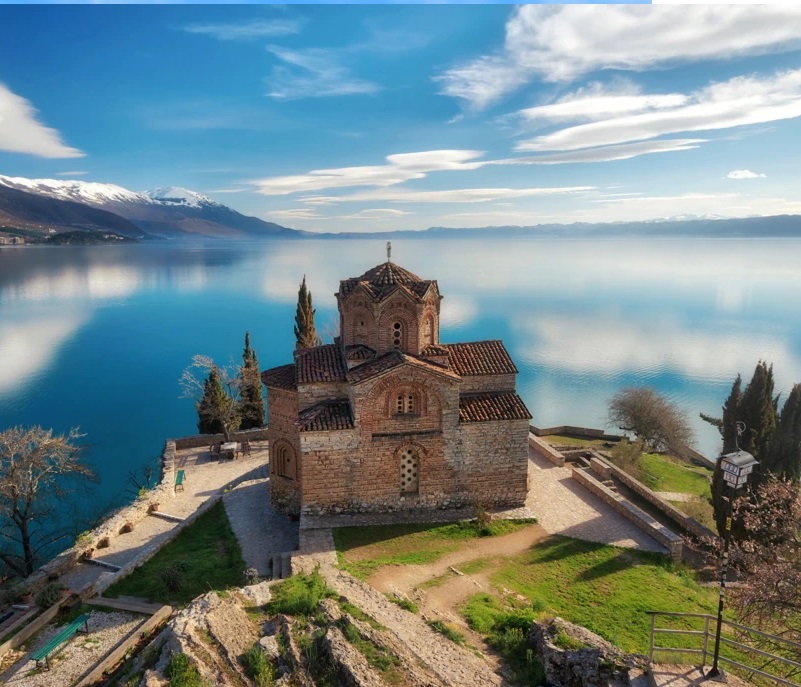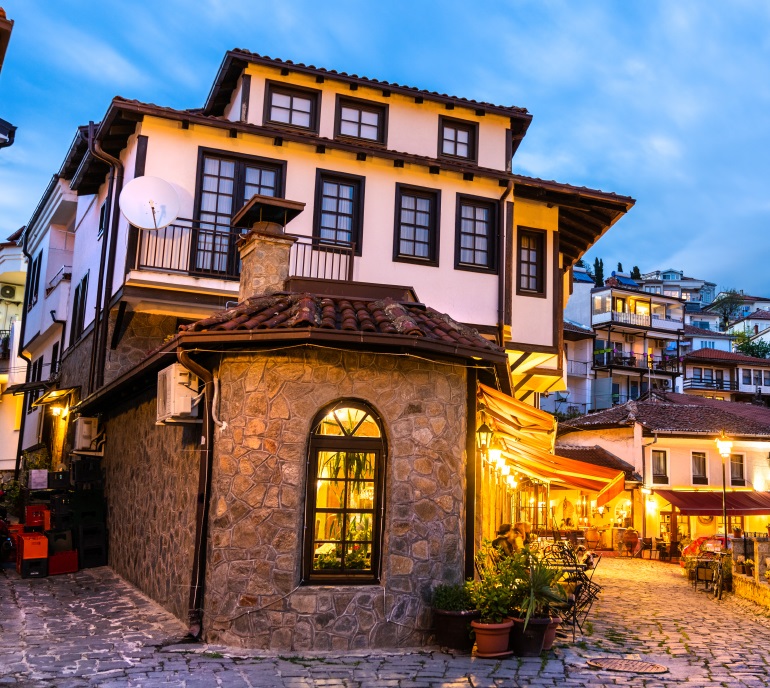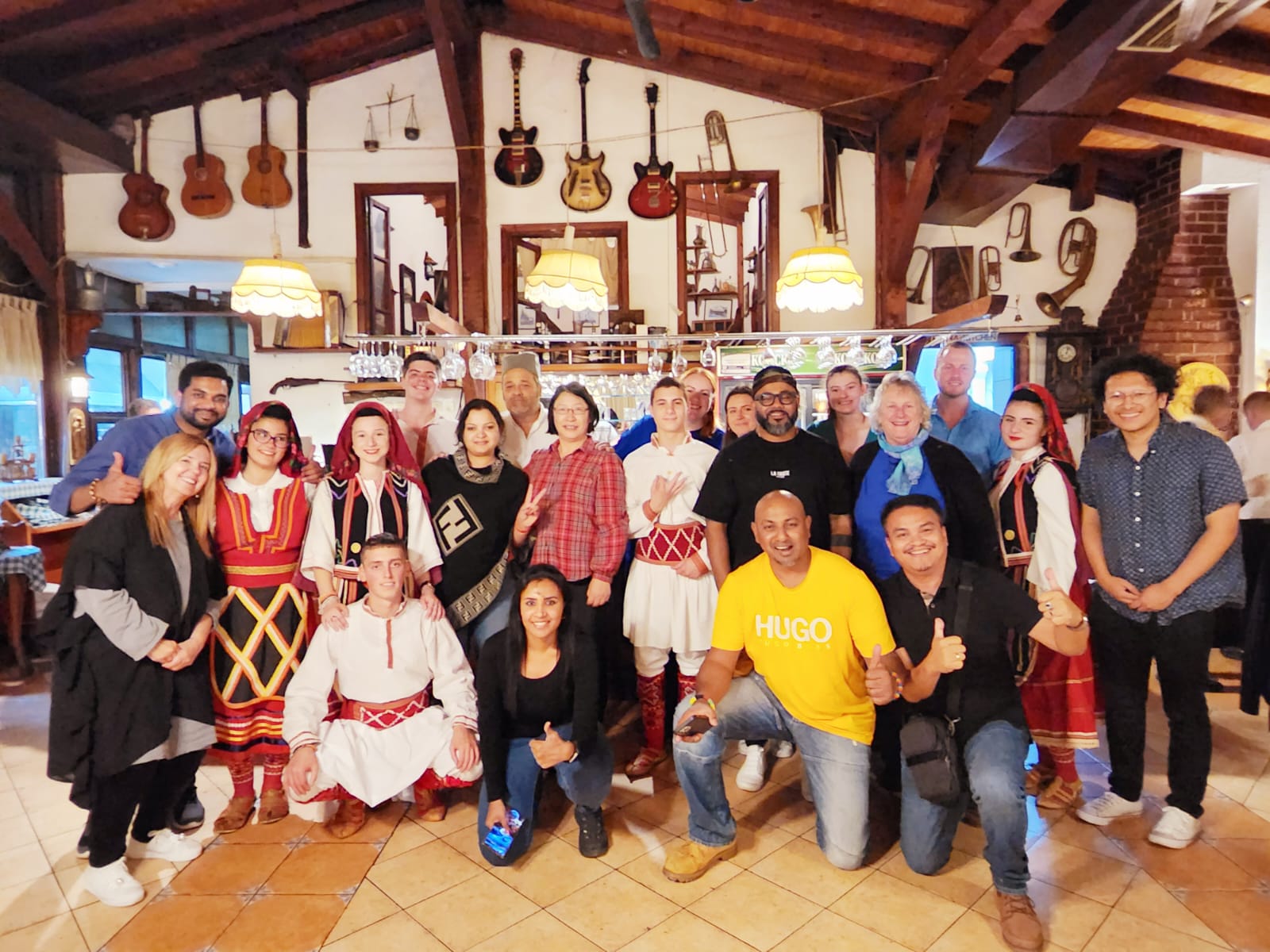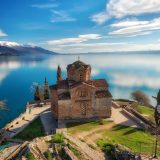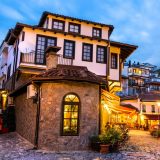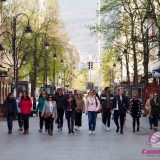Basic data about the tourism in Republic of North Macedonia
The significance of the tourism in Republic of North Macedonia is part of the earliest curiosity and the desires and activities of the human for the realization of the world around him, it has a very rapid development trend, both in the world and in Republic of North Macedonia. It offers people content-based use of leisure time in spaces that with their natural and social characteristic are the basis for new attractive experiences and relaxation. Tourism as a commercial branch is a significant challenge for the countries’ economic development.
Republic of North Macedonia is located in Southeast Europe, in the central part of the Balkan Peninsula. It has a position of a strategic crossroad and some kind of a bridge between Europe and the nearby countries of Asia and North Africa. Republic of North Macedonia belongs to the group of countries from the so-called Western Balkans. It is surrounded by the following neighbours – Serbia and Kosovo to the north, Bulgaria to the east, Greece to the south, and Albania to the west.
History of tourism
One of the first explanations of tourism as a system was given in 1985 by Mill and Morrison, who interpreted and explained it in terms of supply and demand. Their model consisted of four related elements: market, marketing, travel and destinations.
Records in Republic of North Macedonia date from the beginning of the 20th century. Based on the documents in the Historical Archive in Bitola, materials and articles in old newspapers were discovered. They confirm that on 21 May 1914 a trip of 120 Bitola citizens was organized to Valjevo and Belgrade. Passengers were seen off at the railway station by a number of citizens of Bitola. Some of the participants of the trip went to visit their sons in the Serbian army. For some of the participants, the trip was due to tourist incentives.
In Bitola there was a tourist association “Southern Lakes” as far back as in 1927. In 1936, with the release of the railway line Bitola-Skopje, there was a more intensive development of tourism in Republic of North Macedonia, so that student excursions were organized. Republic of North Macedonia, and especially Bitola, were visited by a large number of Frenchmen who participated in the fights in Kajmakcalan during the First World War. In 1939, a plan for the construction of a house on the Great Lake at the mountain of Baba was made, and at the same time the mountain tourism in Republic of North Macedonia on the mountain Pelister was developed. Foreign tourists were also interested in Heraklea, where excavations began in 1934
Extending on over 25,713 square kilometres, Republic of North Macedonia is a territory inhabited by almost two million inhabitants. It’s capital is Skopje with about half a million inhabitants. It is a multi-ethnic and multicultural society with different religions. In Republic of North Macedonia, apart from Macedonians, there are also many ethnic groups – Albanians, Turks, Serbs, Vlachs, Roma and others. Two thirds of the population are Orthodox Christians, others are Muslims, Catholics, and so on. The official language is Macedonian. The flag of Macedonia is red with a golden-yellow sun with eight arms crossing along a diagonal, horizontal and vertical, and the currency is Denar (1 Euro – 61,5 Denars).
History of Republic of North Macedonia
Macedonia as a state is part of the contemporary international political scene since gaining independence from the Yugoslav Federation and is its active subject both on a bilateral and multilateral level. But when it comes to conditions and data imposed by history and culture, it can be said that Republic of North Macedonia is one of the older European and world civilizations within the Roman, Byzantine and Ottoman Empire.
Potentials
It helps increase economic growth and development of the country, attract new investments, create new jobs, improve the living standard. Tourism also helps to stimulate local industry and trade, promote cultural values and natural resources, protect cultural heritage, and the like. The Internet, like electronic social networks, has a significant impact on tourism through online offers of many products and services.
The Internet is the main source of information at a time when competition in the market is enormous. If travel agencies and the whole sector want to be successful and to see continuous development in their work, they need to adapt to these changes. This is especially true for the online tourist offer, because potential tourists and travelers are increasingly in need of information about the tourist destinations they want to visit.
Republic of North Macedonia has the potential for many types of tourism, but the greatest interest is for the cultural, religious, active and rural tourism, then there is interest in our food, our wineries, as well as interest in visiting our biggest natural lakes – the Ohrid lake, Prespa lake and the Dojran lake. More recently, the need for development of active tourism in Republic of North Macedonia is growing. Alternative and adventurous tourism has been emphasized, since there are excellent conditions in Republic of North Macedonia for them – gentle and steep mountains, ski slopes, calm and fast rivers, wide lowlands…
Economy of tourism in Republic of North Macedonia
Macedonian tourism in the past ten years has been on the rise and has seen an increase of about 140%. It promoted the country as an interesting tourist destination in the Balkans and aroused interest for guests from several countries of the world to visit it.
The number of tourists in Republic of North Macedonia is increasing year by year. The average annual increase of tourists is 15%, while only in April 2018 it grew by 21.4% compared to the same period last year. Domestic tourists increased by 10.8%, while foreign tourists increased by 23%
These data indicate that in the Republic of North Macedonia a new approach has been established towards tourism activities, the goal of which is to maximize the contribution to the general economic development of the country. It does not mean anything else, but the application of the concept of economic planning and profiling of a competitive product
- Area:
- 67,000 km2
- Population:
- 2.083 million (2017)
- President:
- Stevo Pendarovski

